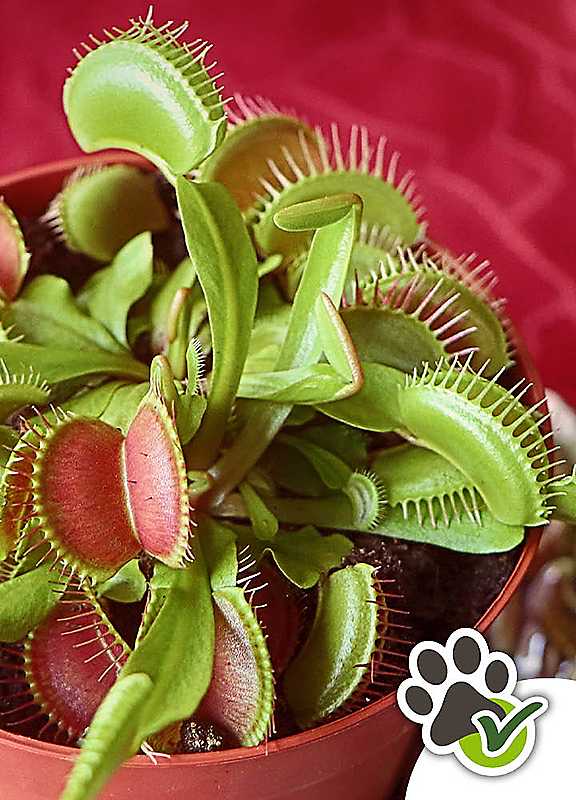
You Garden Venus Fly Trap Plant 'Dionaea Muscipula'
25 GBP
Arguably the most iconic of the insect eating plants, the jawed traps spring shut when triggered by a passing insect and begin the process of digesting the victim to release its valuable nutrients. The Venus flytrap attracts insects by releasing a scent which mimics those emitted by fruits and flowers and in addition, the lobes of each trap secrete a sweet mucous which act as an attractant along with red colouring which intensifies in bright summer sun, fooling the insect into thinking that it is a flower. The traps of this fascinating plant are shaped from the ends of the leaves, with specially adapted hair-like sensors which cause the trap to be triggered when touched two or three times in quick succession. This prevents accidental triggering by rain or debris falling in and the traps are also cleaver enough not to close on really tiny insects which would waste valuable energy for very little return. Once the jaws have closed, there is no escape. The struggling insect stimulates the trap to close further, immobilising it. Digestive acids are then produced by the leaf which kill, then dissolve the body and absorb the valuable nutrients. Once closed, traps take 5 to 12 days to reopen after the prey has been digested and will only work a couple of times before they become unusable, so don't be tempted to closed them yourself as this will weaken the plant. A native of USA swamps, the Venus Fly Trap - Dionaea Muscipula - will grow perfectly happily on a windowsill or frost-free greenhouse. In Spring / Summer plant should be watered from below during the growing season. The easiest way to do this is to permanently stand the pot in a saucer that is filled with rain water to 2.5 cm (1 in) deep. Don't be tempted to feed plants yourself, they'll catch all that they need themselves. If you must, just leave them outside for a few days in the summer to 'catch up'. The Venus Flytrap may flower, but it is best to cut these off as this will weaken the plant and result in fewer, smaller traps. Never apply fertiliser to the plants. In Autumn/Winter you will notice some of the leaves begin to die off, and this is perfectly normal and nothing to worry about as the plant enters its winter dormancy. Watering at this time can be reduced so that plants are kept just damp - all you need to do is let the waster tray empty before filling it up again, keeping it about 1 cm deep. Any dead foliage can be cut off. Plants need a cold winter rest, so if you are growing your plant indoors, move it to a cooler position such as an unheated greenhouse, porch or unused and unheated room. Plants are hardy down to 0°C, then towards the end of February, they will start to come back into growth, and they can be put back on a sunny windowsill and stood back into a tray of rainwater. Brand: You Garden Supplied as an established plant in a 12 cm (4¾ in) pot Ready to give you an instant pest clearing service! Pet friendly plant
Buy